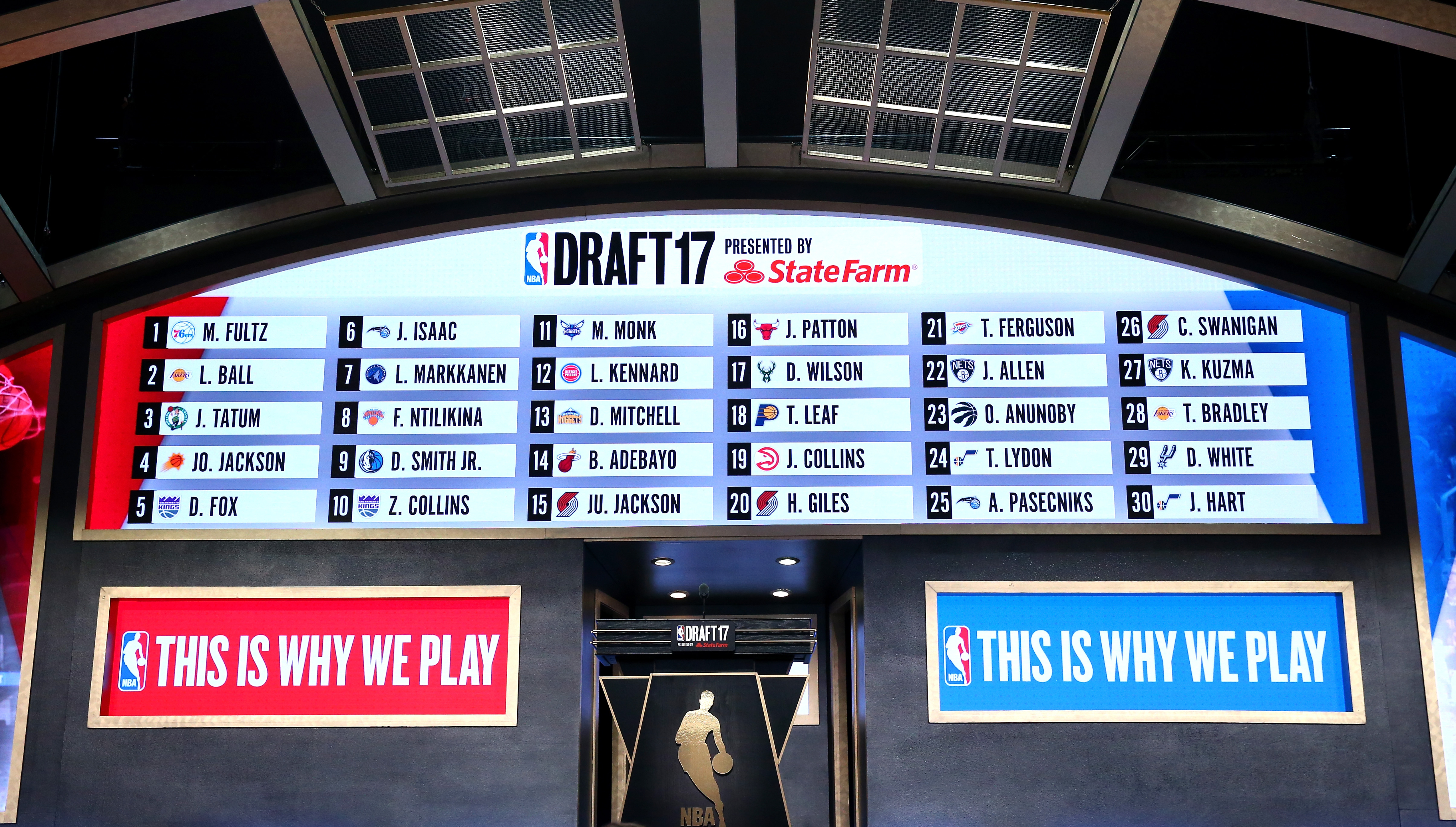
*Pulls up chair, flips it backwards and plops down with arm on top of backrest*
So… you want to learn about the NBA draft. Not sure how it all works? Don’t understand why you keep hearing ‘wingspan’ over and over?
Well, you’ve come to the right place. You’re about to get a crash course on the NBA draft, just in time for this year’s edition, taking place on Thursday.
You won’t become an expert on how to draft and evaluate players, but rest assured no one is really an expert at that. The draft is, at the end of the day, a crapshoot and while the front offices of teams actually making the picks know a lot more than anyone else, it doesn’t mean they’re always right – or even right most of the time.
What you will learn is how the draft works and what about it is worth paying attention to. Whether you want to start following the NBA more closely or are just interested in the draft as a one-off, we’ve got you covered.
Let’s get started.
What is the NBA draft?
If you’re unfamiliar with America’s four major sports leagues – the NBA, NFL, MLB and NHL – a draft is used for the selection of incoming players, consisting of amateurs from college and professionals from overseas.
Unlike the Premier League or other football leagues, teams in the NBA are franchises, not clubs. As such, a socialist system is used whereby the worst teams at the end of each season, determined by record, have the best odds of drafting the top incoming players. A lottery is held to solidify the draft order, which you can learn more about here.
The actual draft itself will take place at Barclays Center in Brooklyn, where NBA commissioner Adam Silver will announce the first-round picks before giving way to deputy commissioner Mark Tatum, who will call out the round two selections.
Many of the top players expected to go in the first round have been invited to attend the draft, and whoever shows up will walk across the stage and greet Silver when their name is announced. This is actually one of the best parts of the draft because we get to see the outfits the players are wearing, which have seemingly become more and more bombastic over the years.
Plus, the players usually do a brief interview in which we get to see their emotion after they’ve fulfilled a lifelong dream. It’s a big night, after all.
#TheStarters play an #NBADraft edition of Fashion or Nah❓ 👔🤔 pic.twitter.com/OBGWD70nnO
— NBA TV (@NBATV) June 23, 2017
Who can be drafted?
Some of the greatest players in NBA history never went to college – most famously LeBron James, Kobe Bryant and Kevin Garnett. But since 2006, the NBA has had a rule in place that states players are only eligible for the draft one year after their high school graduation, and that they must by 19 by the end of the calendar year of the draft.
That’s basically resulted in the top prospects spending a lone year at college before declaring their eligibility, but in some cases players have chosen to spend their gap year overseas with a professional team.
International intrigue
With the NBA being as global as it is, there’s no shortage of international players in the draft these days.
Just two years ago, the 2016 draft featured a record 26 international players selected, with 14 of those taken in the first round.
With how much more information and video is available now, foreign players don’t carry the same cloud of mystery they used to. Even so, international players who’ve not played in an American college and enter the draft from overseas remain an unknown in the eyes of many because of the difference in competition.
Luka Doncic, a 19-year-old who plays for Real Madrid in the EuroLeague, is this year’s top international prospect and considered a top-five pick.
Buzzwords
Finally, if you follow the draft close enough – the lead-up and the event itself – you’ve been subjected to a number of buzzwords that are impossible to avoid this time of the year.
The aforementioned ‘wingspan’ is one of the most common, as are ‘upside’, ‘high-motor’ and ‘raw’. Here’s a translation:
‘Wingspan’ refers to a player’s… well, wingspan of course. The larger a player’s wingspan, the better. Length of all kind is coveted in the NBA for obvious reasons.
‘Upside’ is simply potential. If a player has high upside, they have a high ceiling and could develop into a star one day.
‘High-motor’ is another way of saying a player constantly hustles and gives effort.
‘Raw’ references how underdeveloped a player is. The tools may be there, but they haven’t been utilised all that well yet.
These terms can be important in evaluating prospects, but they’re definitely used more than they need to be. Don’t get bogged down by them.